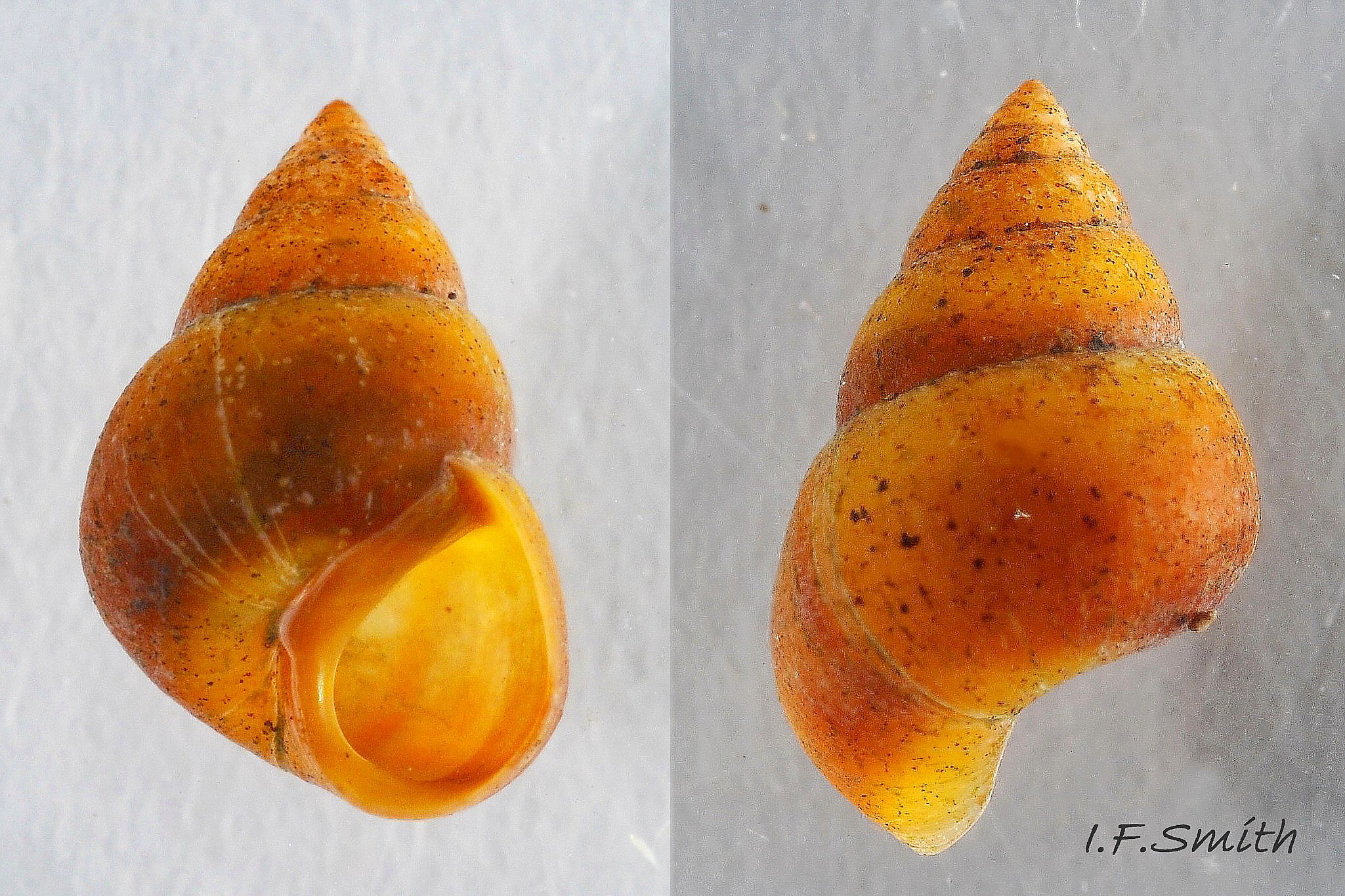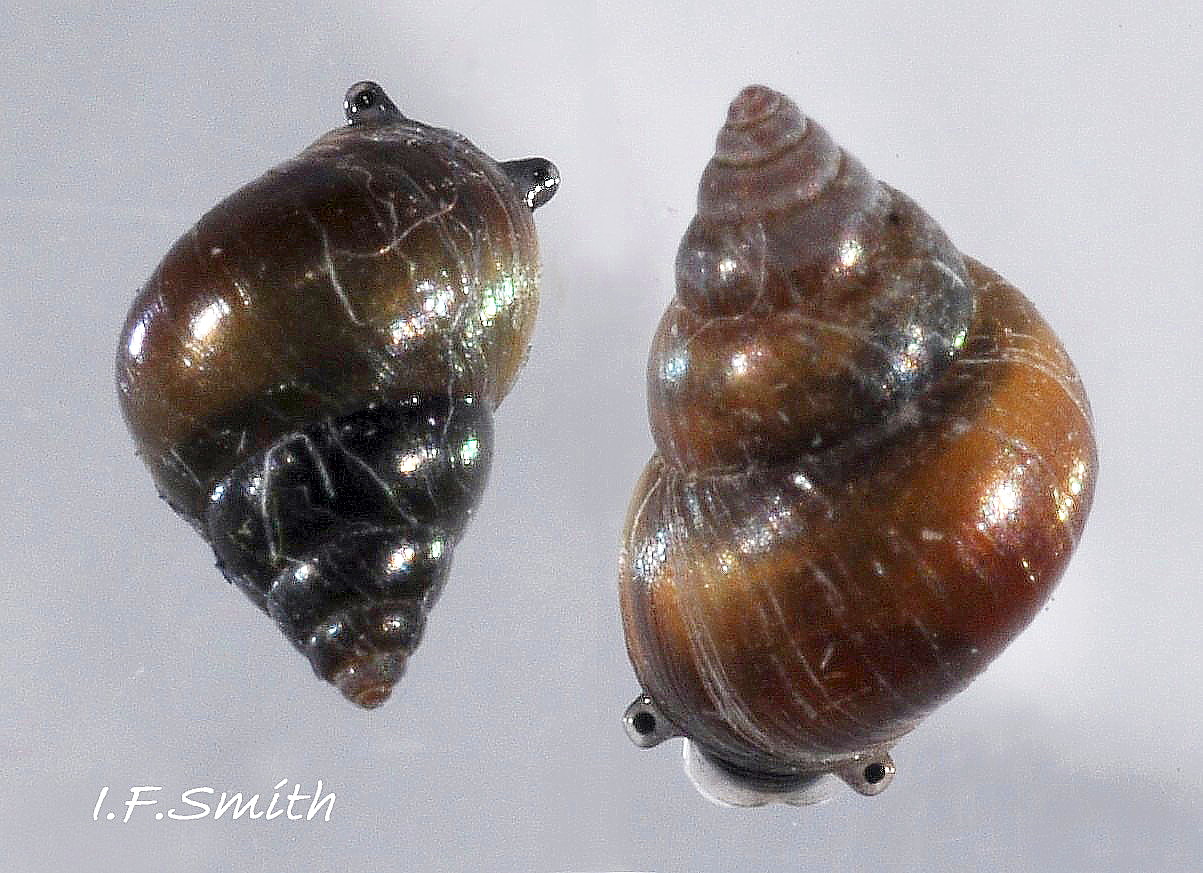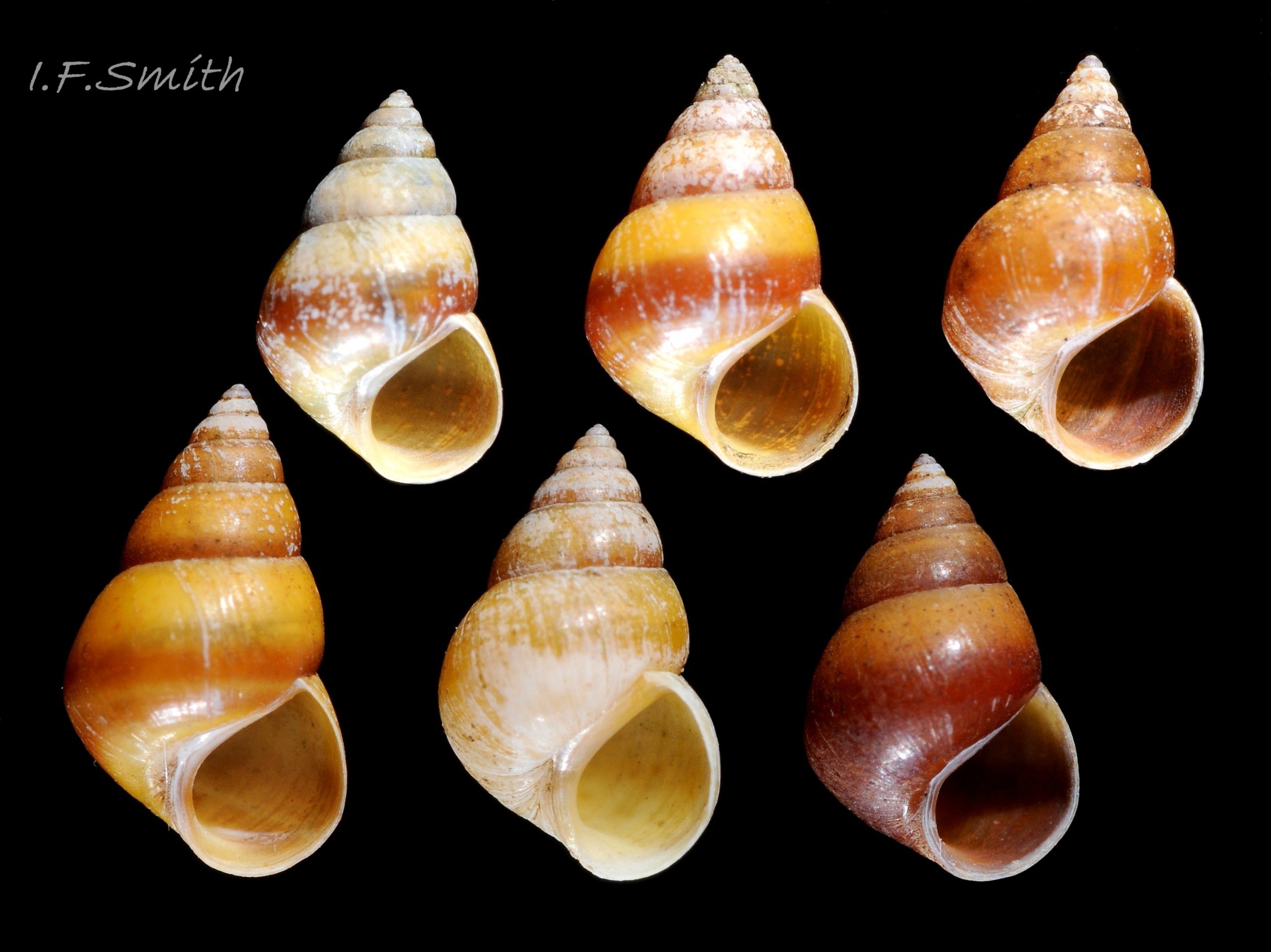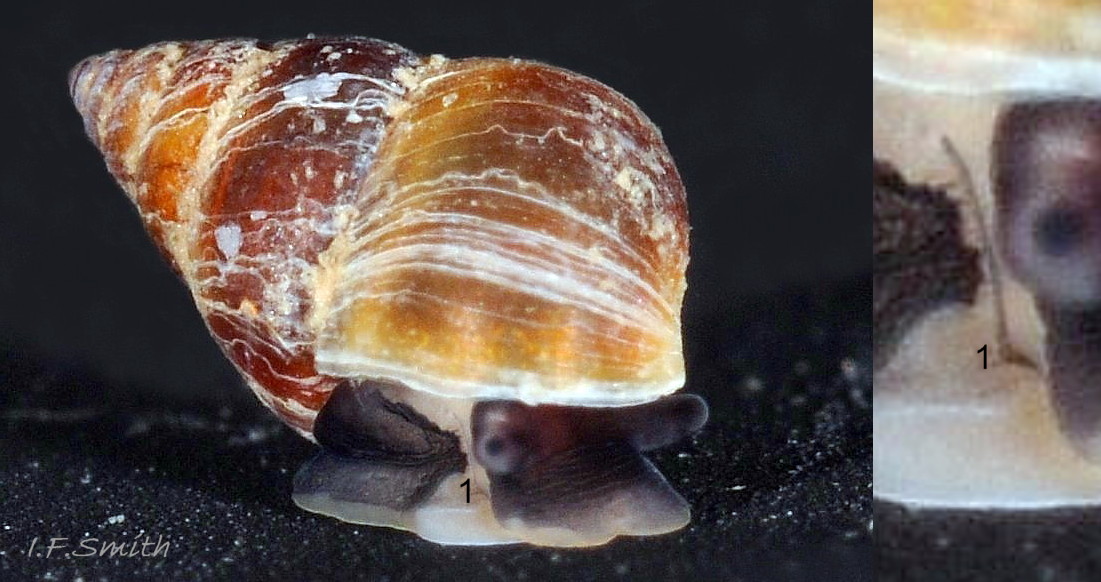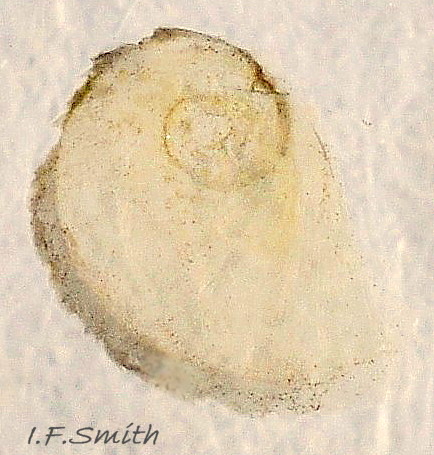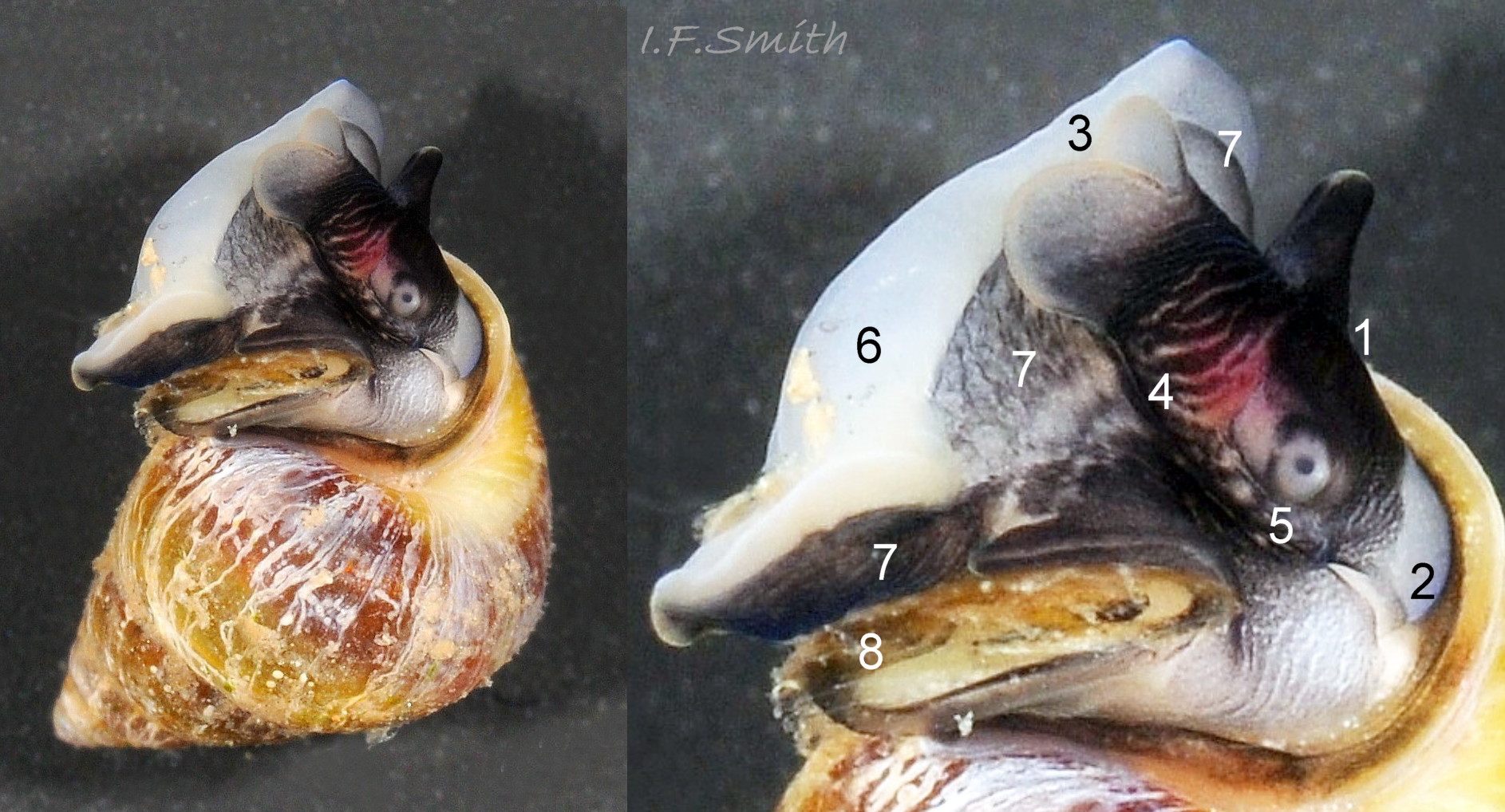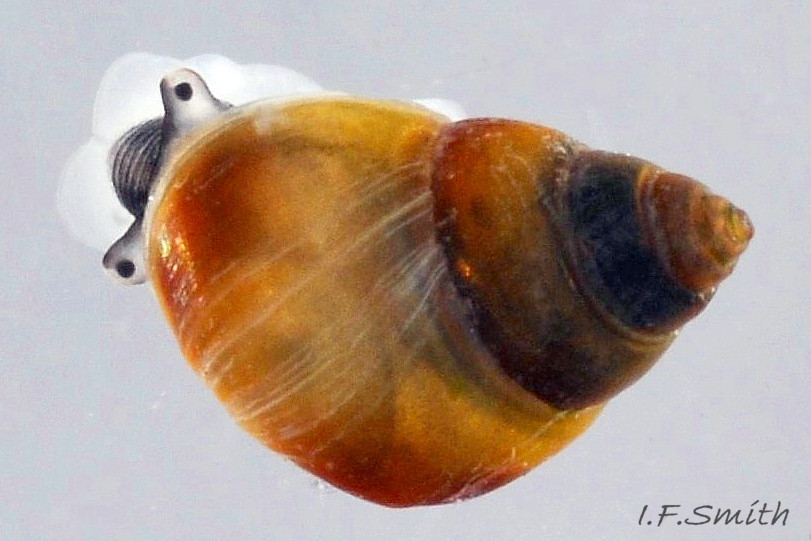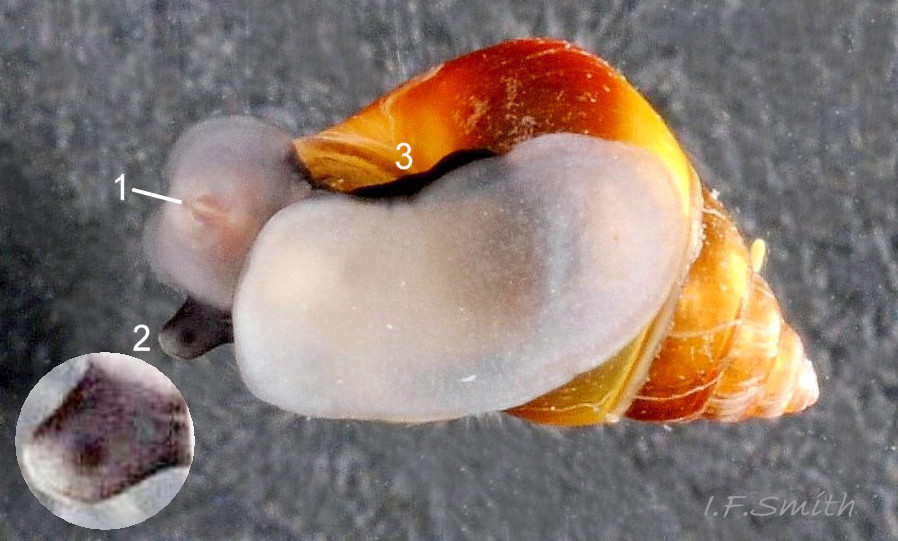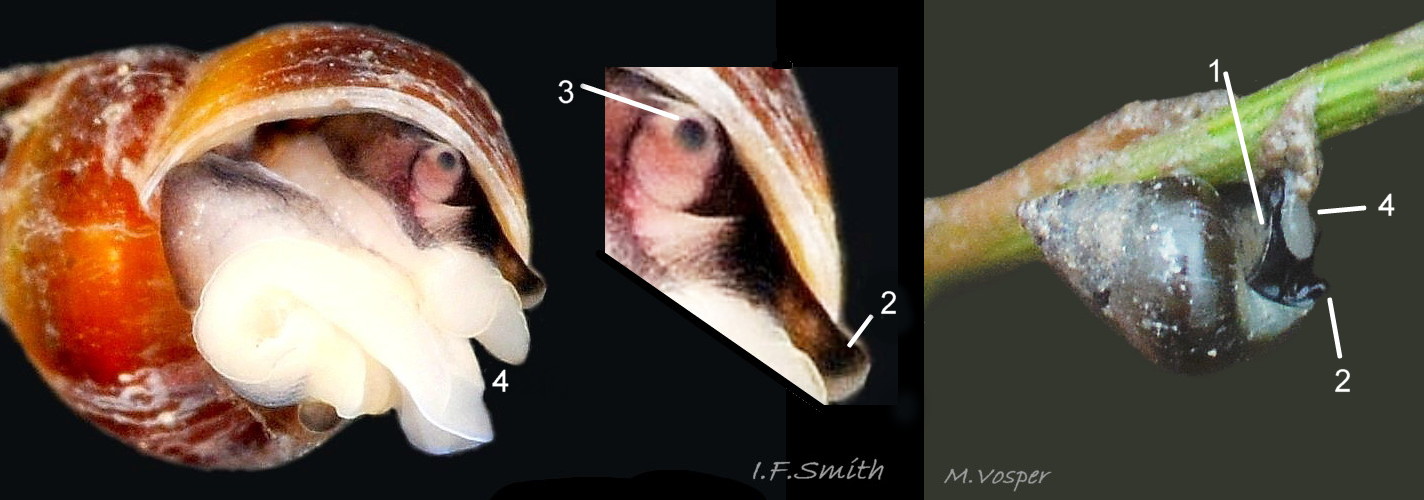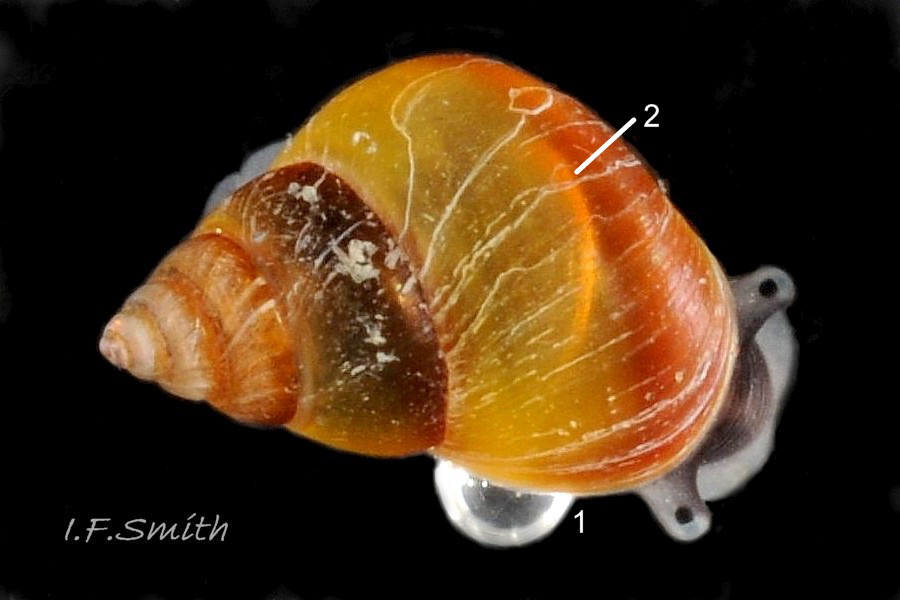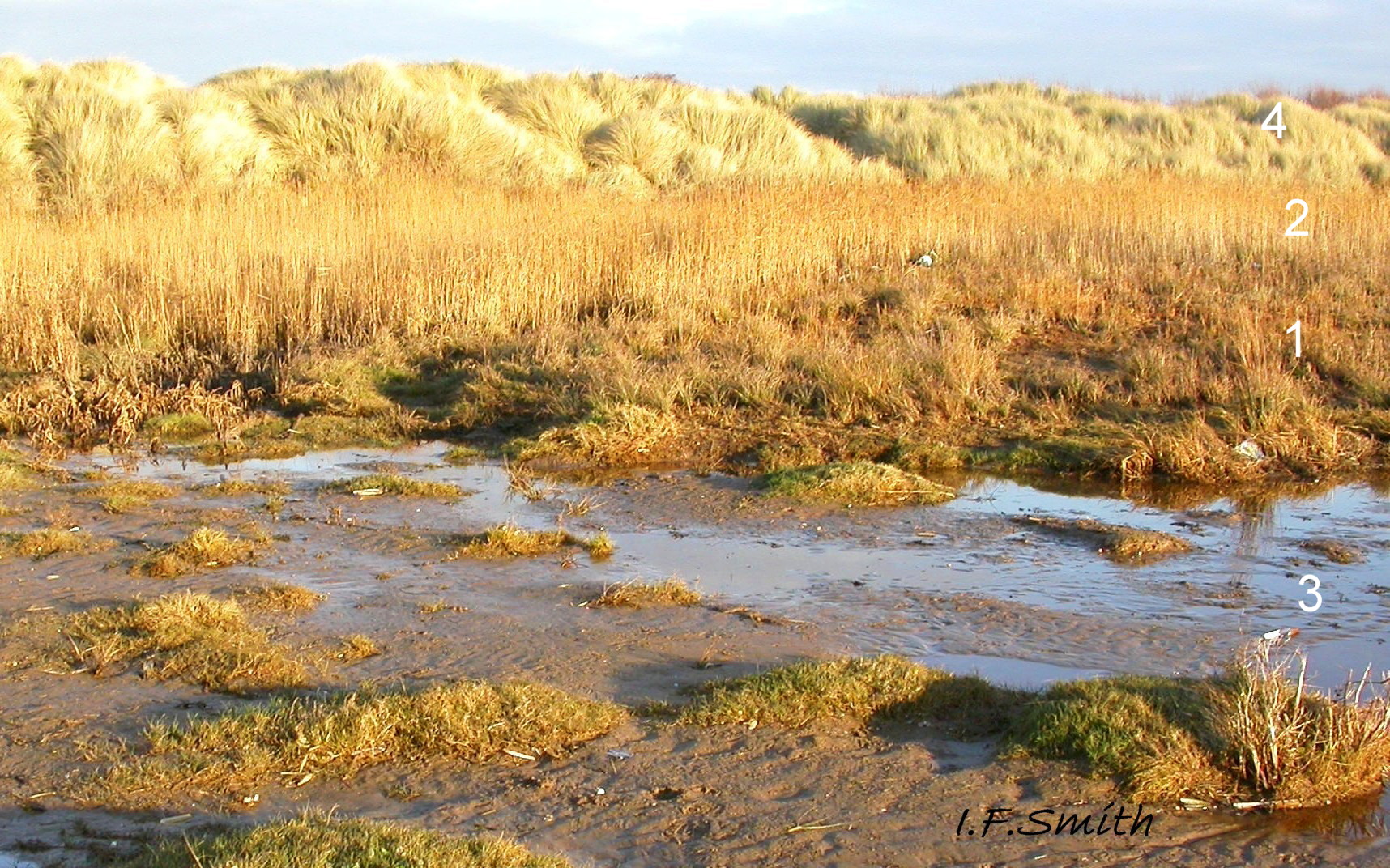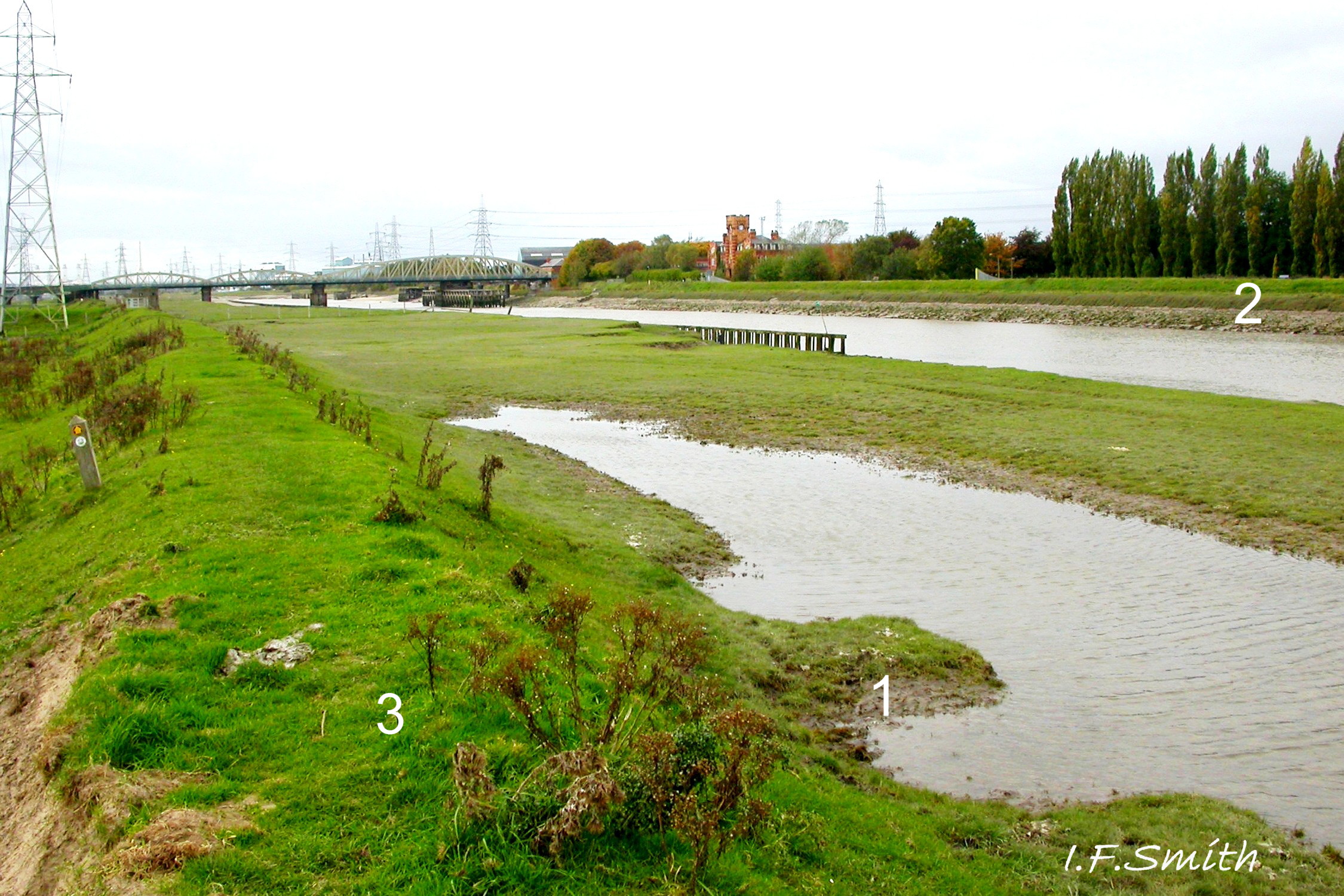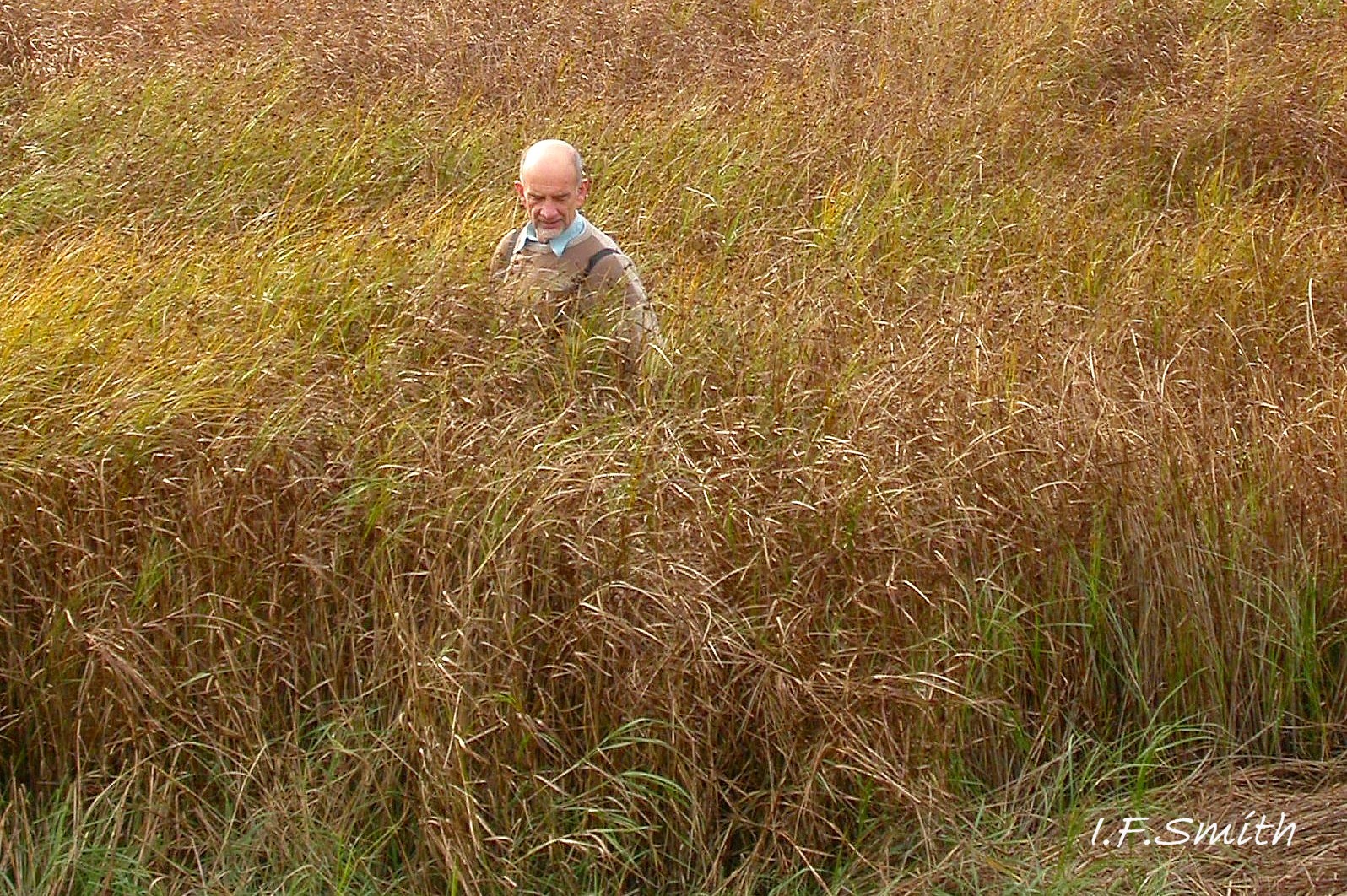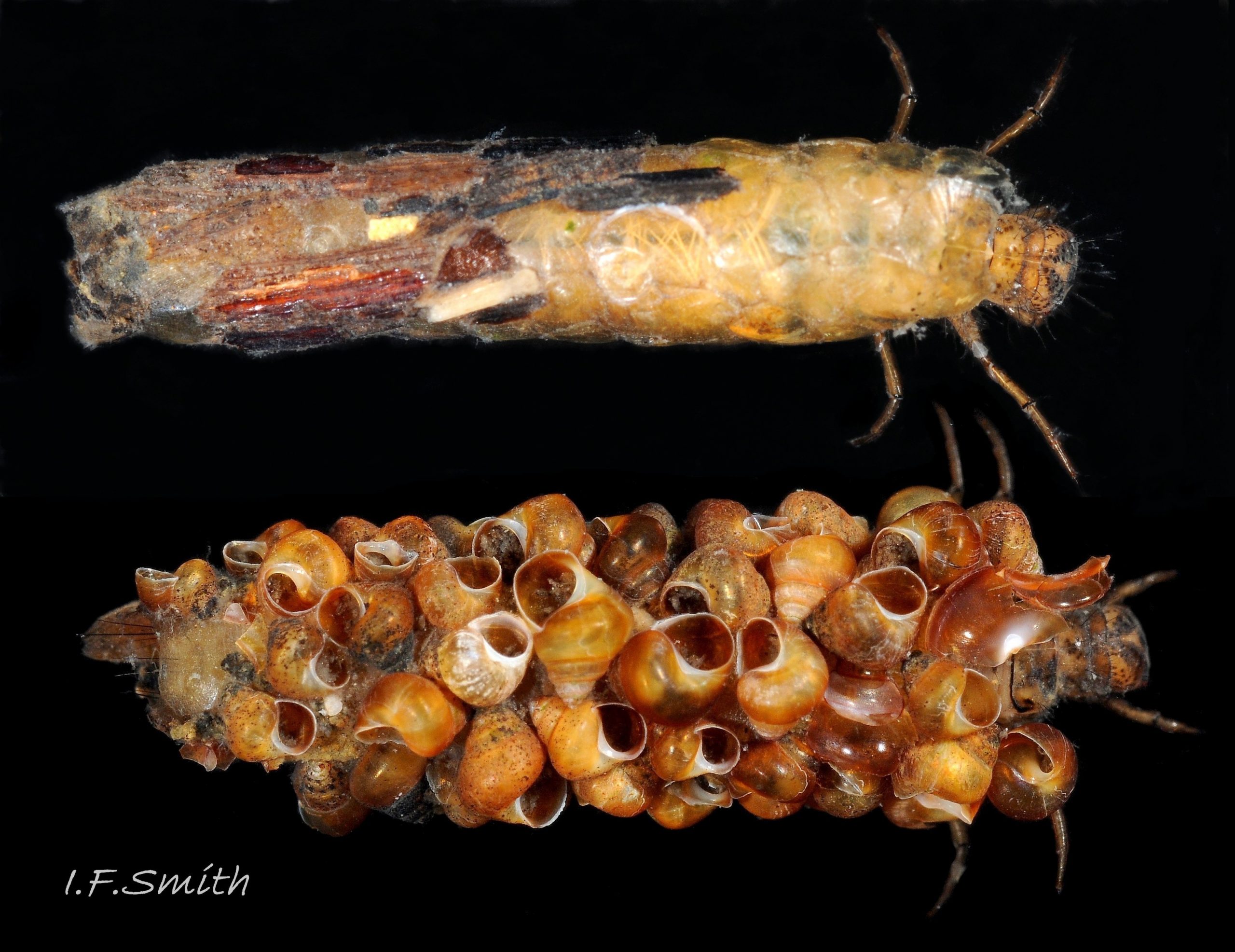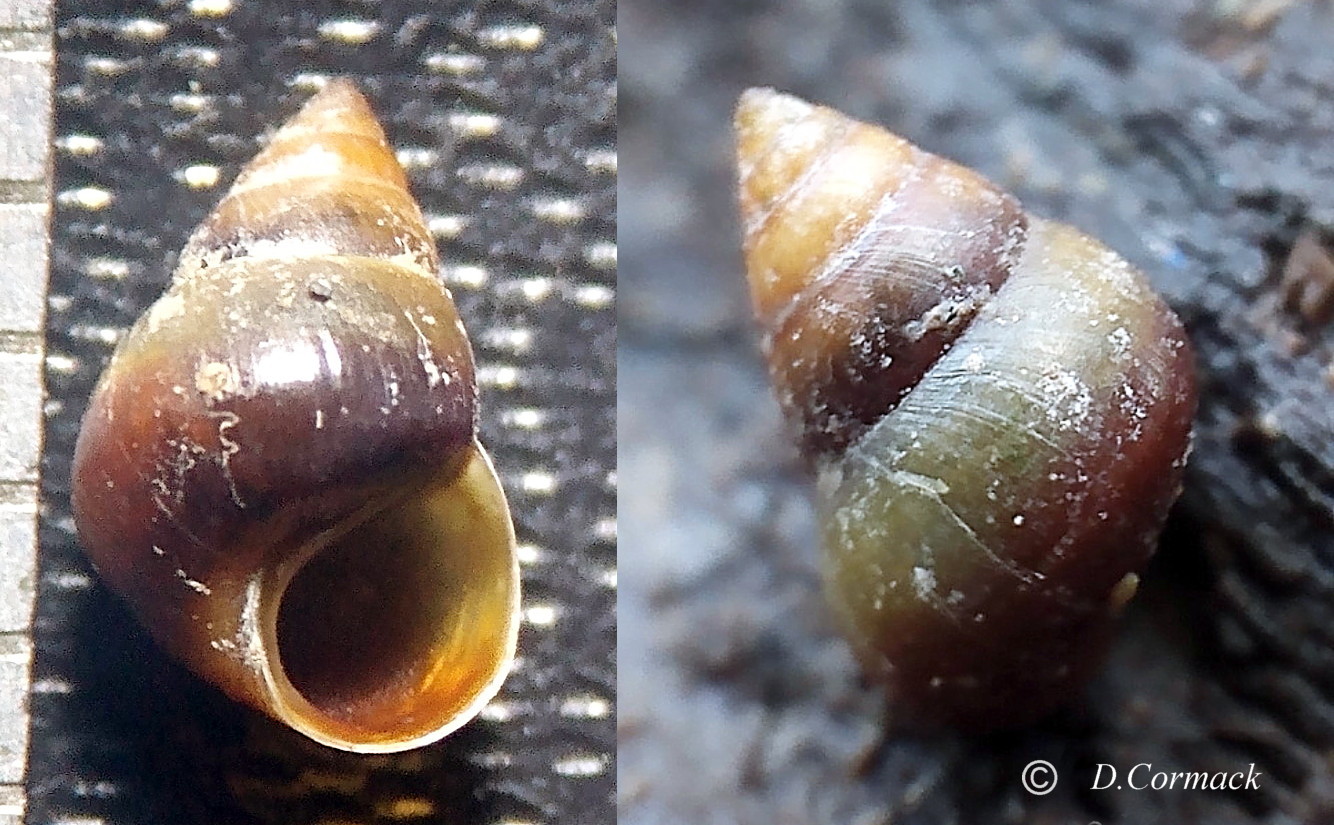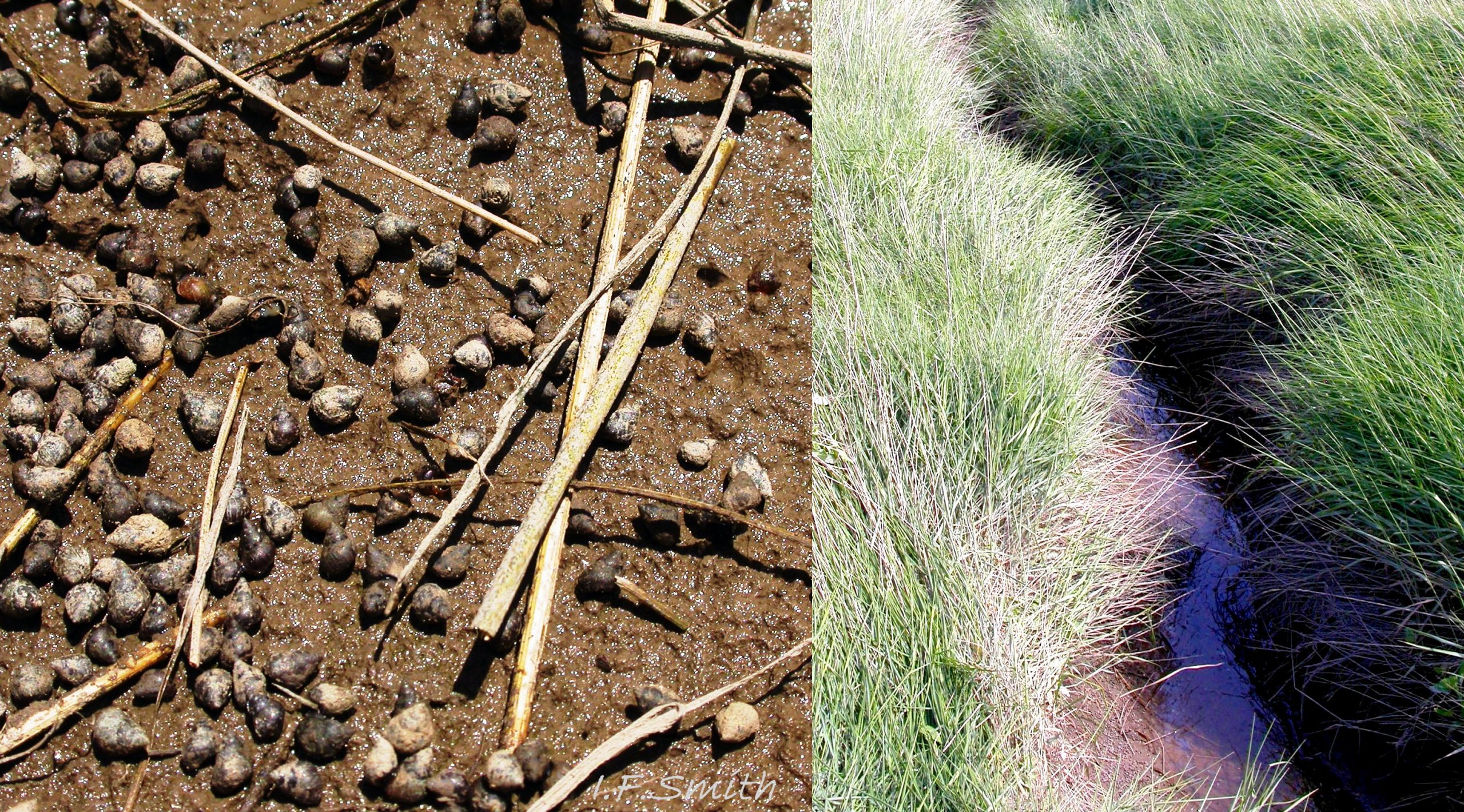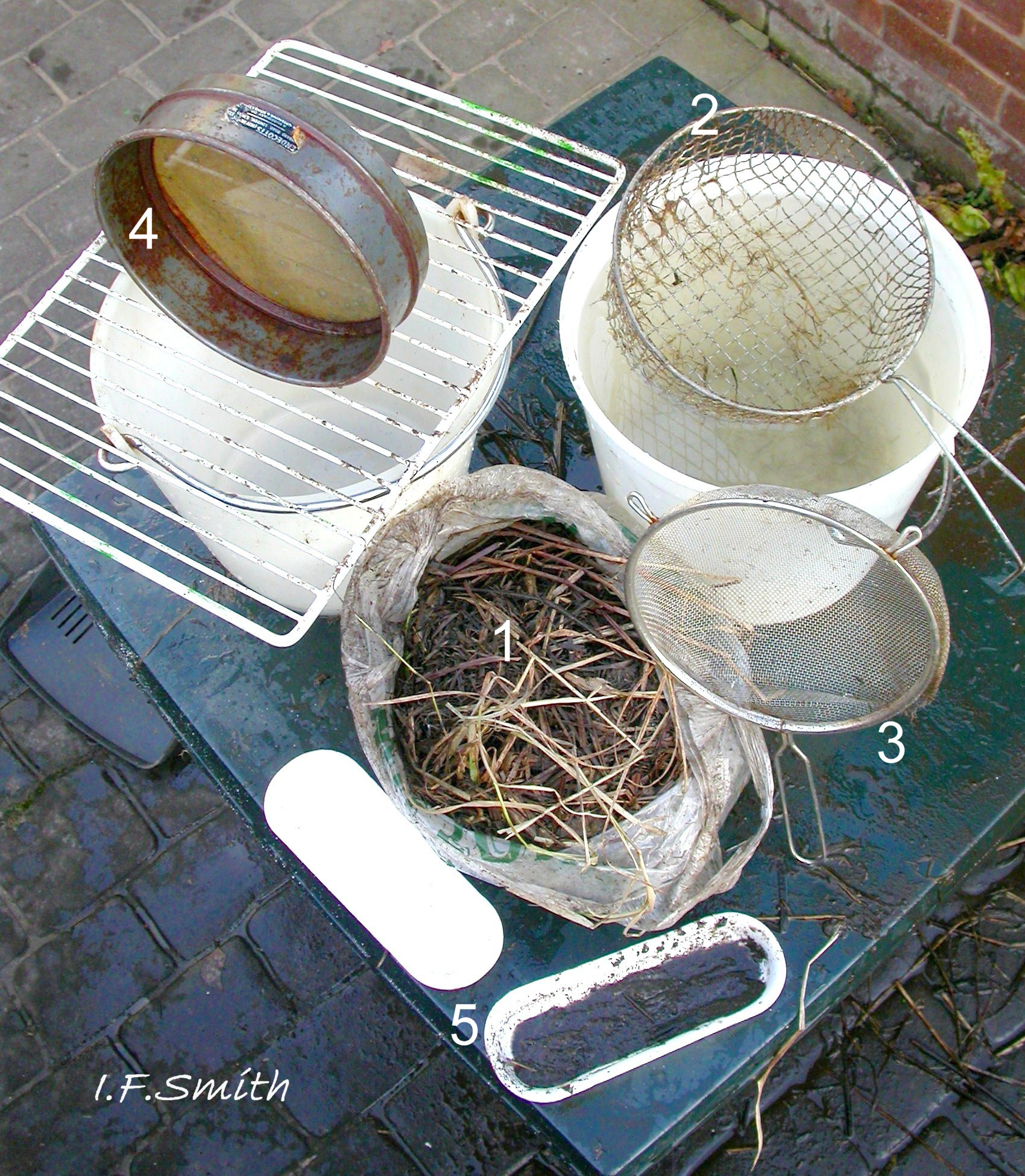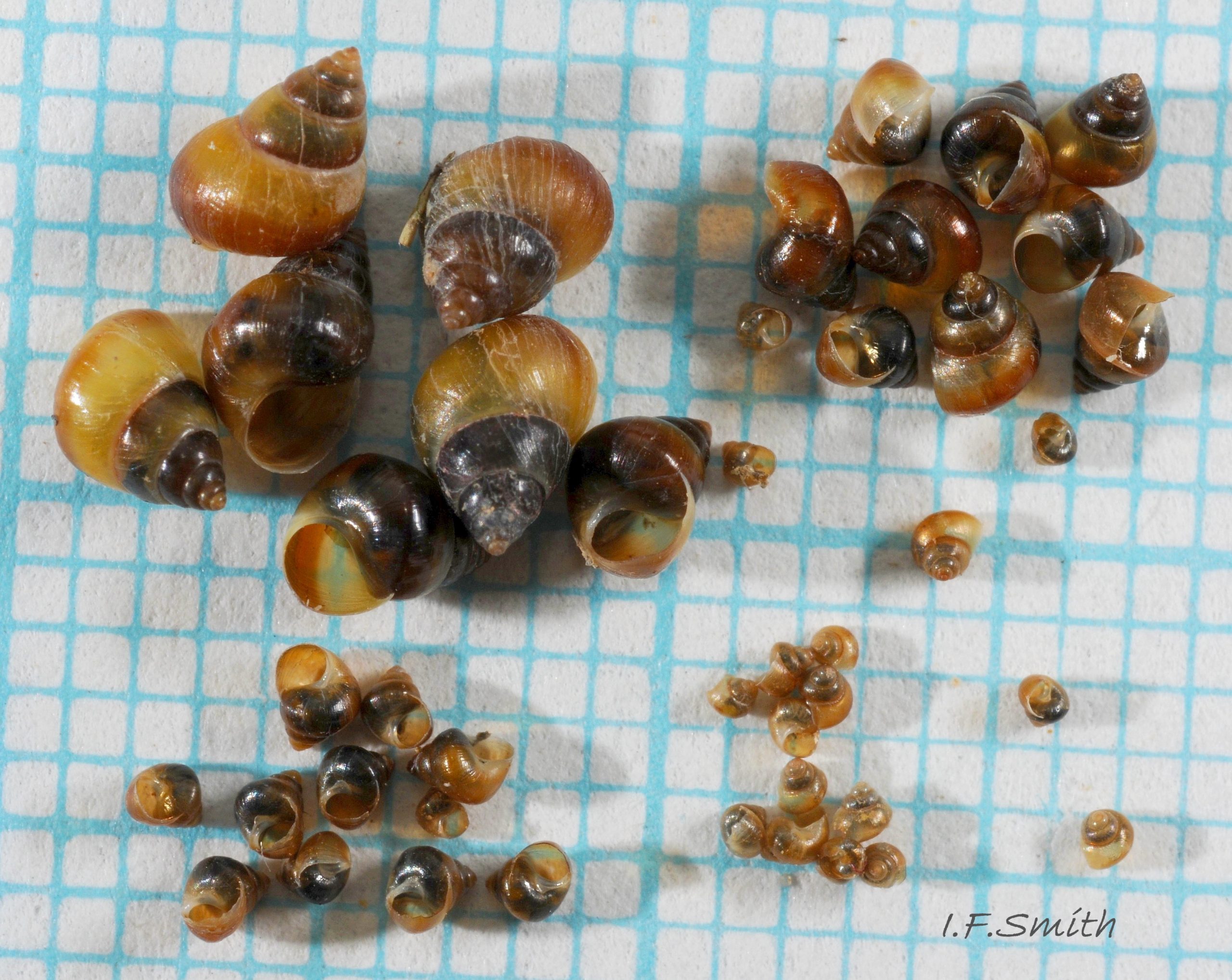Click image to enlarge with full caption
Assiminea grayana Fleming,1828
Current taxonomy: World Register of Marine Species
Synonyms: Assemania grayana (Fleming, 1828)
Vernacular: Dun sentinel; Malwen y morfa (Welsh); schorreslakje (Dutch); Gray’s kustslakje (Dutch); marsksnegl (Danish);
GLOSSARY BELOW.
Shell description
Usually up to 5 mm high, exceptionally 6.2 mm 01 Assiminea grayana . Short squat cone of 6-7 whorls, spire about 50% of shell height. Shells over 5 mm sometimes have relatively broader spire. Apex a fine point. Whorls nearly flat sided, sutures shallow. No umbilicus, but large specimens may have a columellar depression 01 Assiminea grayana . Aperture about 50% shell height, adapical angle acute 01 Assiminea grayana . When found un-submerged on salting, live animal darkens translucent shell to dark brown or black 02 Assiminea grayana. When well lit in water, occupied or vacant translucent shell is yellow, orange-brown, buff, or chestnut-brown 03 Assiminea grayana . Often spiral band of darker colour abapically on whorls 03 Assiminea grayana. When periostracum worn, whitish patches visible on dry vacant shell 03 Assiminea grayana Substantial periostracum protects shell from acidic rain, has many growth lines, and often projects beyond lip of aperture 04 Assiminea grayana . Operculum is ovoid spiral of slightly over two turns on large specimen 05 Assiminea grayana ; inner surface convex, outer concave; transparent, thin, slightly tinted horn colour.
Body description
Head and anterior of body black or grey changing abruptly to white or silver-grey further back. Snout terminates in two broad grey or whitish lobes 06 Assiminea grayana ; has transverse translucent furrows which may reveal red of buccal mass 07 Assiminea grayana. Short blackish stump-like tentacles with internal eye near tip, clearly visible dorsally 08 Assiminea grayana and through apex 07 Assiminea grayana but obscured by pigment laterally and ventrally 09 Assiminea grayana. Upper surface of foot usually blackish or grey, except anterior whitish where broad snout rests 10 Assiminea grayana. Opercular disc black 04 Assiminea grayana . Grey groove on each side from mantle cavity to sole on whitish anterior part of foot 04 Assiminea grayana. Groove on right carries faecal pellets from anus, and female’s ovum capsules away from genital opening in mantle cavity. Male smaller than female; has relatively enormous penis mid-dorsally on head. Sole white 09 Assiminea grayana. No ctenidium; mantle surface used for respiration 11 Assiminea grayana . When submerged, water flow through mantle cavity driven by cilia on ridge on mantle skirt and ridge on dorsal body wall.
Key identification features
Assiminea grayana Fleming, 1828
Adapical angle of aperture acute 01 Assiminea grayana .
Periostracum often projects beyond lip of aperture 04 Assiminea grayana .
Short blackish grey tentacles with eye visible dorsally near tip 08 Assiminea grayana.
Snout terminates in two broad grey or whitish lobes, head darker 06 Assiminea grayana.
Near high water mark on saltings and tidal rivers, usually moist, but not submerged except just after high spring tide or flooding.
Similar species
Differentiation simple if head and tentacles examined and habitat known. Misidentifications arise from relying on shell features alone.
Peringia ulvae (Pennant, 1777)
Adapical angle of aperture acute 07 Peringia ulvae .
Translucent tentacles with black subterminal band and, usually, many yellow/ white pigment flecks 11 Peringia ulvae .
Left tentacle thicker and less smooth than right tentacle 12 Peringia ulvae .
Salinity 5-40 p.p.t., usually estuarine mudflats or saltings with open tidal access.Lower down shore than A. grayana.
Potamopyrgus antipodarum (J.E. Gray, 1843)
Adapical angle of shell aperture rounded 04 Potamopyrgus antipodarum .
Translucent grey tentacles often with fine white medial line, no subterminal black mark and few/no white flecks apart from basal patch in front of eye 05 Potamopyrgus antipodarum .
Primarily in flowing freshwater, but also in brackish ditches and lagoons to 17 p.p.t. salinity.
Melarhaphe neritoides (Linnaeus, 1758)
Adapical angle of shell aperture acute 02 Melarhaphe neritoides .
Usual max. height 9 mm, rarely to 10.5mm.
Periostracum brown / black-brown, sometimes with bluish bloom, usually eroded from spire 04 Melarhaphe neritoides .
Periostracum extends as flexible flap beyond outer lip on many 09 Melarhaphe neritoides .
Long cephalic tentacles, grey-black dorsally with thin pale median line 10 Melarhaphe neritoides.
Eye centrally in large whitish disc at base of long tentacles 6 Melarhaphe neritoides .
At and above EHWS on exposed rocky shores 13 Melarhaphe neritoides .
Habits and ecology
Restricted to a narrow zone at mean high water level on saltings located in estuaries 12 Assiminea grayana and by tidal rivers 13 Assiminea grayana. Resilient; adult can survive for weeks in dry conditions or submerged in fresh or sea water (experimentally with access to surface netted off). But hygrophile when free, seeking moist, but not submerged, conditions, often where fresh water seeps onto a salting. When spring tides inundate salting, climbs up submerged plant stalks.
Sweeps broad snout over substrate as it creeps, feeding on diatoms and decaying herbage 09 Assiminea grayana. Male rides on larger females shell as he inserts penis into oviduct. In late spring and summer, ovum capsules, containing one egg each, dropped singly from groove 04 Assiminea grayana on right side of female as moves across mud, or conglomerate mass of up to 80 capsules with faecal pellets and mud is packed together by foot. Veliger larvae released into water when ova covered by high spring tide.
At 34 sites on Dee Estuary, only molluscs intermingled with A. grayana were Myosetella myosotis(frequently) and Limapontia depressa (occasionally). On one occasion, core samples contained A. grayana and Potamopyrgus antipodarum, but core was into saturated loose sponge of decaying vegetation with A. grayana on emergent surface and P. antipodarum in water below 14 Assiminea grayana. Though thousands of Peringia ulvae sometimes on adjacent ground 12 Assiminea grayana , none found intermingled with A. grayana on the Dee. Other intermingled invertebrates were salting-adapted, such as Paragnathia formica (isopod) Paragnathia formica, Limnephilus affinis (brackish-tolerant caddis larva) 15 Assiminea grayana and Bembidion spp. (small beetles). Purely marine, terrestrial or freshwater mollusc species were not found intermingled with A. grayana.
Distribution and status
A. grayana is locally abundant (up to 9000/ m²) in a narrow zone at EHWS on saltings. It was originally found around the southern North Sea from Denmark to the English Channel, and from the Humber Estuary to Kent (Fretter and Graham, 1962). Since 1990 has spread to the Shannon Estuary (1991), and N.E. Irish Sea (2005). There is an isolated, September 2013, NBN record on a salting in the Isle of Wight but no specimen or image is available. None were found in a targeted search of saltings on the east side of the Severn Estuary upstream of Aust (2011). Further expansion was recorded in April 2023 at Bridgwater Bay, Somerset and in December 2023 at Saul Warth on the tidal River Severn with confirming images 10 Assiminea grayana and 15.1 Assiminea grayana .
See GBIF map www.gbif.org/species/2301950 and NBN map species.nbnatlas.org/species/NBNSYS0000006617#tab_mapView
See GBIF map https://www.gbif.org/species/2301950 and NBN map https://species.nbnatlas.org/species/NBNSYS0000006617#tab_mapView .
Finding Assiminea grayana
Most likely in known areas of distribution. Spreading, so important finds possible elsewhere, but clear photos of tentacles, or retained specimens, advisable in case of challenge. Saltings on south coast of Scotland west of Caerlaverock record seem promising; 2018 record at Wigtown on NBN. Select for search a salting by a tidal river or estuary at any salinity to almost freshwater.
Tidal river
Narrow grazed salting pasture at sides of tidal rivers and streams often easiest to search 13 Assiminea grayana . A. grayana often at edge of salting on river bank mud overhung by vegetation.
Estuary
On wide saltings can be difficult to locate right zone in mosaic of different levels and channels 16 Assiminea grayana, choose narrow salting if available 12 Assiminea grayana . Try where salting merges into purely terrestrial vegetation, especially where kept moist, but not submerged, by freshwater seeping onto salting (often indicated by Phragmites reeds). Channels on large saltings may have zones at right level 17 Assiminea grayana.
If terrestrial invertebrates such as woodlice and land slugs and snails found, move seaward / lower. If marine species such as Peringia ulvae occur, move landward / higher. If Potamopyrgus antipodarum is found, move to moist, not submerged, ground. Myosotella myosotis occurs intermingled with A. grayana, but is found in wider range of moisture and level.
Detecting the snails
If Assiminea plentiful on bare mud (near vegetation), should be easy to spot 17 Assiminea grayana . If none visible on surface, hand raking thatch and surface roots at base of vegetation may reveal some. If a few found, more probably discovered if bulb digger used to take three cores through thatch about 1cm deep into substrate. Break cores in bucket of tap water and pass through kitchen sieve, mesh about 1mm, for adults. For juveniles, pass liquid and mud a second time through finer sieve or lace curtain lining sieve 18 Assiminea grayana . Place retained detritus in small trays (e.g. polystyrene date trays; go easily under microscope) with small amount of water (not covering detritus) and leave an hour or more for Assiminea to crawl out of water. Inspect under magnifier or low power stereoscopic microscope. Density /m² can be determined if area of cores calculated.
If presence not detected on the salting, take small raked samples of debris from bases of vegetation over wide area at damp spots until carrier bag full. Swish debris in bucket of water. Remove coarse debris with spread fingers or wide mesh. Sieve bottom residue as above. Density can not be calculated, but presence may be detected 19 Assiminea grayana .
After high spring tide, usually damp hollows on upper salting will be full of water for a time. A. grayana crawl up erect vegetation to try to reach the surface. Hundreds may be easily seen and collected by swishing wire sieve through stalks.
Acknowledgements
I thank Matthew Vosper and Adam Parker for use of their images of finds of A. grayana in Somerset and the upper Severn Estuary.
References and links
Fretter, V. and Graham, A. 1962. British prosobranch molluscs. London, Ray Society.
Graham, A. 1988. Prosobranch and pyramidellid gastropods. London.
Green, J. 1968. The biology of estuarine animals. London.
Glossary
aperture – mouth of gastropod shell; outlet for head and foot.
apical – at the apex.
adapical – towards the apex of the shell.
abapical – away from the apex of the shell.
cephalic – (adj.) of the head.
chitin – semitransparent flexible horny material.
chitinous – (adj.) made of chitin.
cilia – mobile linear extensions of membrane used in feeding or locomotion.
columellar – (adj.) of or near central axis of spiral gastropod, columellar lip = lower (abapical) part of inner lip of aperture.
ctenidium – comb-like molluscan gill; usually an axis with a row of filaments either side.
EHWS – (level of) extreme high water spring tide, usually near March and September equinoxes.
haemoglobin – oxygen-carrying substance in blood; scarlet when oxygenated.
HWS = (level of) high water spring tide, occurs on a few days in each month
hygrophile – living in moist, but not submerged, conditions.
mantle – sheet of tissue that secretes the shell and forms a cavity for the gill in most marine molluscs.
operculum – horny plate, sometimes calcareous, used to close shell aperture.
ovipositor – structure used in depositing spawn.
oviduct – internal tube to carry ova from ovary to the exterior.
p.p.t. – (salinity) parts salt per thousand parts water (brackish <30ppt).
periostracum – thin horny layer of chitinous material often coating shells.
periostracal flap – extension of periostracum as flexible flap beyond outer lip of gastropod aperture.
plankton – animals and plants that drift in pelagic zone (main body of water).
salting – area of salt tolerant vascular plants rooted in sediment between mean high water mark (MHW) and extreme high water of spring tides (EHWS). [preferred synonym for “saltmarsh” as much of salting not marshy]
supralittoral – above level of extreme high water of spring tide.
subterminal – a short distance from the end.
suture – groove or line where whorls adjoin.
umbilicus – cavity up axis of some gastropods, open as a hole or chink on base of shell, often sealed over.
veliger – shelled larva of marine gastropod or bivalve mollusc which swims by beating cilia of a velum (bilobed flap).
